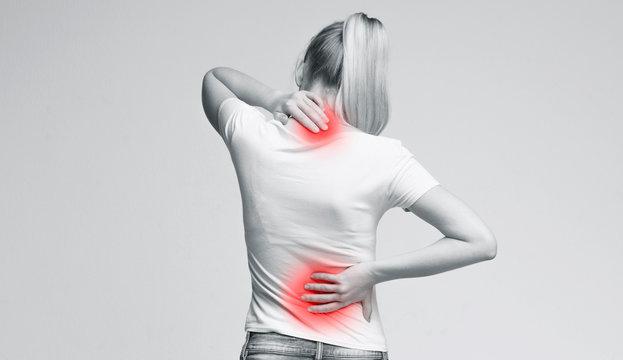Natural and Medical Pain Relief: Choosing the Right Path for You

Pain is a universal experience, affecting everyone at some point in their lives. Whether it’s chronic pain from conditions like arthritis or acute pain from an injury, the search for relief can lead individuals down various paths. Two primary avenues for pain relief are natural remedies and medical treatments, each with its own set of benefits and considerations. This article aims to explore both options, helping you make an informed choice for your pain management journey.
Understanding Pain
Before delving into the methods of relief, it’s essential to understand pain itself. Pain is a complex phenomenon, serving as a warning signal from the body about potential injury or illness. It can be categorized into two main types:
-
Acute Pain: This type of pain is often sudden and severe, resulting from injury or illness. It typically resolves as the underlying cause heals.
-
Chronic Pain: Chronic pain persists for weeks, months, or even years. It can result from conditions like fibromyalgia, arthritis, or back problems and often requires a comprehensive management approach.
Recognizing the type of pain you are experiencing is crucial in choosing the appropriate treatment pathway.
Natural Pain Relief Options
Natural pain relief methods have gained popularity in recent years, often viewed as less invasive alternatives to pharmaceuticals. Here are some common natural remedies:
1. Herbal Supplements
Herbal remedies have been used for centuries to alleviate pain. Some of the most researched options include:
Turmeric: Contains curcumin, which has anti-inflammatory properties.
Ginger: Known for its ability to reduce muscle pain and soreness.
Willow Bark: Often used for headaches and back pain, it contains salicin, a compound similar to aspirin.
2. Physical Therapy and Exercise
Physical therapy focuses on strengthening muscles and improving flexibility, which can alleviate pain, particularly in the back and joints. Regular exercise, even low-impact activities like walking or swimming, can also release endorphins—natural pain relievers produced by the body.
3. Acupuncture
This ancient Chinese practice involves inserting thin needles into specific points on the body to relieve pain. Research suggests that acupuncture can be effective for chronic pain conditions, including migraines and osteoarthritis.
4. Mind-Body Techniques
Mind-body approaches, such as meditation, yoga, and deep-breathing exercises, can help manage pain by reducing stress and promoting relaxation. These practices can change the way the brain perceives pain, making it a valuable tool for those with chronic pain.
5. Heat and Cold Therapy
Applying heat or cold to affected areas can provide immediate pain relief. Heat helps relax and soothe stiff muscles, while cold therapy reduces inflammation and numbs sharp pain.
Medical Pain Relief Options
While natural remedies can be effective, medical interventions may be necessary, especially for severe or chronic pain. Here are some common medical treatments:
1. Over-the-Counter Medications
Common non-prescription medications include:
Acetaminophen: Effective for mild to moderate pain relief, particularly headaches and muscle aches.
Nonsteroidal Anti-Inflammatory Drugs (NSAIDs): Medications like ibuprofen and naproxen reduce inflammation and relieve pain. They are effective for conditions like arthritis and menstrual cramps.
2. Prescription Medications
For more severe pain, healthcare providers may prescribe stronger medications:
Opioids: Powerful pain relievers that can be effective for acute pain but come with risks of addiction and dependence.
Antidepressants and Anticonvulsants: These can be prescribed for chronic pain conditions, especially those with a nerve component, like fibromyalgia or neuropathic pain.
3. Injections
In some cases, healthcare providers may recommend injections for pain relief. Corticosteroid injections can reduce inflammation, while nerve blocks can target specific areas of pain.
4. Surgical Options
When other treatments fail, surgery may be necessary to address the underlying cause of pain. This might include procedures to repair injuries or relieve pressure on nerves.
Choosing the Right Path
Deciding between natural and medical pain relief depends on various factors, including the type and severity of pain, personal preferences, and medical history. Here are some considerations to help guide your decision:
1. Consultation with Healthcare Professionals
Always consult with a healthcare provider before starting any treatment plan. They can help identify the cause of your pain and recommend appropriate treatments, whether natural, medical, or a combination of both.
2. Severity and Duration of Pain
For acute pain resulting from an injury, over-the-counter medications and natural remedies may be sufficient. However, chronic pain often requires a more comprehensive approach, potentially including prescription medications or physical therapy.
3. Personal Health History
Consider any existing health conditions or medications you are currently taking. Some natural remedies can interact with medications, while certain medical treatments may not be suitable for individuals with specific health issues.
4. Lifestyle and Preferences
Reflect on your lifestyle and preferences. If you prefer holistic and natural approaches, explore those options first. However, if you need immediate relief or have severe pain, medical interventions may be more appropriate.
5. Trial and Adjustment
Finding the right pain relief method may take time and experimentation. Keep an open mind and be willing to adjust your approach based on what works best for you. Tracking your pain levels and responses to treatments can provide valuable insights for you and your healthcare provider.
Summary
Pain management is a personal journey, and the choice between natural and medical pain relief should be based on individual circumstances and preferences. Both approaches offer unique benefits, and in many cases, a combination of natural remedies and medical treatments can provide the most effective relief. Ultimately, understanding your pain, consulting with healthcare professionals, and remaining open to different solutions can empower you to take control of your pain management journey, leading to a healthier, more comfortable life.
- Art
- Causes
- Crafts
- Dance
- Drinks
- Film
- Fitness
- Food
- Games
- Gardening
- Health
- Home
- Literature
- Music
- Networking
- Other
- Party
- Religion
- Shopping
- Sports
- Theater
- Wellness


